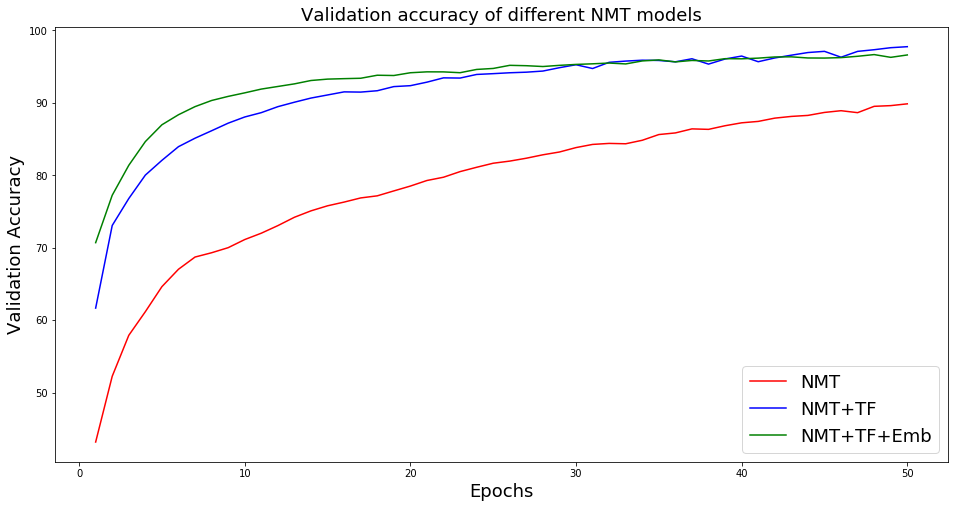Wrap-up and the final showdown
Machine Translation with Keras

Thushan Ganegedara
Data Scientist and Author
What you've done so far
- Chapter 1
- Introduction to encoder-decoder architecture
- Understanding GRU layer
- Chapter 2
- Implementing the encoder
- Implementing the decoder
- Implementing the decoder prediction layer
What you've done so far
- Chapter 3
- Preprocessing data
- Training the machine translation model
- Generating translations
- Chapter 4
- Introduction to teacher forcing
- Training a model with teacher forcing
- Generating translations
- Using word embeddings for machine translation
Machine transation models
- Model 1
- The encoder consumes English words (onehot encoded) and outputs a context vector
- The decoder consumes the context vector and outputs the translation
- Model 2
- The encoder consumes English words (onehot encoded) and outputs a context vector
- The decoder consumes a given word (onehot encoded) of the translation and predicts the next word
- Model 3
- Instead of onehot encoding, uses word vectors
- Word vectors capture the semantic relationship between words
Performance of different models

Latest developments and further reading
- Evaluating machine translation models
- Word piece models
- Enables the model to avoid out of vocabulary words (Sennrich et al., Neural Machine Translation of Rare Words with Subword Units.)
- Transformer models (Vaswani et al., Attention Is All You Need)
- State-of-the-art performance on many NLP tasks including machine translation
- Has an encoder-decoder architecture, but does not use sequential models
- The latest Google machine translator is a Transformer model
All the best!
Machine Translation with Keras

